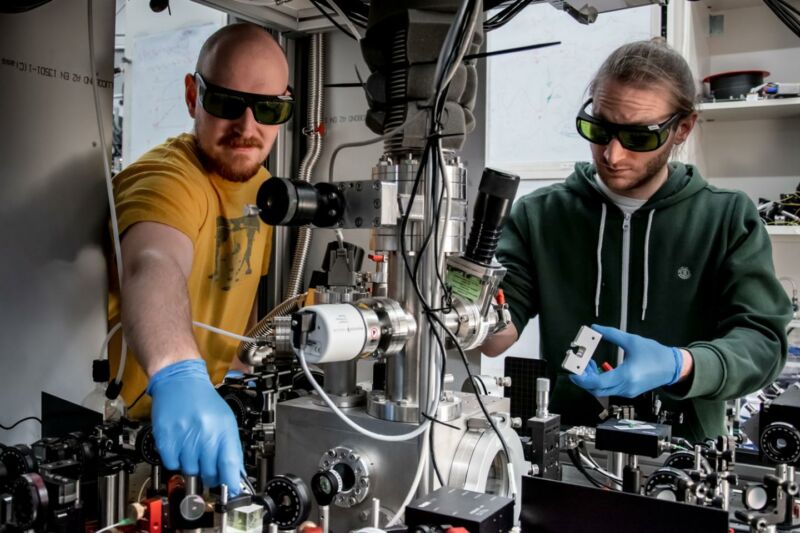
Enlarge / Two of the scientists involved in the new work wearing proper safety equipment while playing with lasers. (credit: Lorenzo Magrini, Yuriy Coroli/University of Vienna)
How big can something get and still display quantum behavior? It's a fundamental question in physics, and it gets at the nature of reality itself. All sorts of weird behavior goes on in the quantum world: particles behave like they're in two places at once, there are limits to how certain we can be of where things are, and so on. But once things get bigger than a handful of atoms, we get the nice, orderly behavior of our familiar world, where things exist in definite locations.
The transition between the quantum and the familiar seems to be set by environmental interactions. Once an object gets big enough, it's constantly bumping into atoms and absorbing photons, any of which can push it out of a well-defined quantum state. So the question becomes one of how big we can let things get while still controlling their interactions with the environment.
For the last decade, the gold standard in this area has been a physical resonator linked to hardware that lets us control it with photons of a specific wavelength. To keep stray bits of energy from messing with the resonator, the whole device is kept very close to absolute zero. But now, researchers have found that they can control the interactions of a tiny bead that's levitated on laser light. While it's smaller than the resonators, the setup works at room temperature and doesn't require that the bead be physically linked to any special hardware.
No comments:
Post a Comment